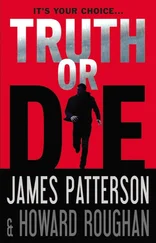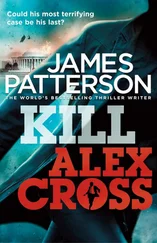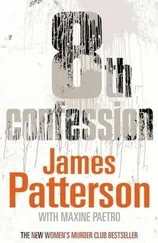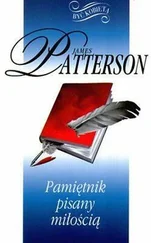But on the phone, he was like a talking telegram.
“Three homicides submitted to ViCAP from three different states,” he continued. “All pointing toward a lone serial killer on the move.”
ViCAP stood for Violent Criminal Apprehension Program, the FBI’s national inventory of every violent crime committed in the United States.
“Over what time period are we talking?” asked Sarah.
“Two weeks.”
“That’s fast.”
“Superfast.”
“Three murders?”
“Yep.”
“Three different states?”
“So far,” said Driesen.
“What’s the connection?”
“The victims,” he answered. “They all have the same name. O’Hara. Damndest thing I’ve ever heard.”
Chapter 31
THE SANDWICHES WERE a dead giveaway.
Sarah had attended countless briefings conducted by Dan Driesen, and not once had he provided anything remotely edible for the occasion. No muffins or bagels, no cookies or anything else to snack on. Certainly no sandwiches, not ever. It just wasn’t his style. You want catered briefings? Go work for Martha Stewart.
Yet there they were. Sandwiches in the center of the conference room table.
After catching the first flight back from Tallahassee, grabbing a cab straight from Reagan National to Quantico, dropping off her suitcase in her office, and making a beeline for the conference room with only seconds to spare before Driesen’s four o’clock briefing, it was the first thing she noticed. A platter of sandwiches. Never had assorted cold cuts carried so much subtext.
This was not your average briefing.
More to the point, Driesen wasn’t completely calling the shots. He was catering to someone else.
Sarah figured she’d know soon enough. Driesen hadn’t arrived yet.
In the meantime, she accepted congratulations for her work in Tallahassee from the rest of the room—a mix of agents and analysts, heavy on the analysts. The BAU, or Behavioral Analysis Unit, was first and foremost about the gathering and interpretation of information. For every agent in the field, there were three analysts back home in Quantico.
“So what’s the story?” asked Ty Agosta, the unit’s criminal psychiatrist and perhaps the last man on the planet who routinely wore corduroy jackets with elbow patches. Not only did he wear them, he made them work.
“I was hoping you knew,” said Sarah.
“Driesen’s been locked in his office for the past hour,” said Agosta. “That’s all I know.”
“With whom?”
He nodded toward the door. That’s who.
Sarah turned to see Dan Driesen walking into the room with his typical long strides. Accompanying him were three men in dark suits, sporting visitor badges and the rigid posture that usually came with wearing a shoulder holster all day long.
One of them looked familiar. Sarah had seen him before, but couldn’t quite place the face. Surely Driesen would introduce him, as well as his two cohorts, to the room.
Only he didn’t. Instead, Driesen simply started the briefing. The three men, as if they were only on hand to observe, took seats in the row of chairs along the perimeter of the room.
After they each grabbed a sandwich, that is.
“Nevada, Arizona, and Utah,” began Driesen, the room lights dimming courtesy of Stan, the audio/video technician, who worked all the feeds to the monitors at the front of the room.
The largest of the flat screens illuminated behind Driesen as he continued, the specifics of the top-line summary he’d given Sarah over the phone that morning appearing as bullet points.
Three different states.
Three dead men.
All within a two-week span.
And all with the same first and last name.
The screen wiped clean as the final bullet point shot up in large type behind Driesen.
THE JOHN O’HARA KILLER, it read.
Chapter 32
“JESUS, THERE MUST be hundreds of John O’Haras out there,” said Eric Ladum, a technical analyst sitting across from Sarah. Whenever he was away from his keyboard, he was always twirling a pen just to keep his fingers busy.
“More like a thousand,” responded Driesen. “Give or take.”
Sarah turned to the Gang of Three sitting along the opposite wall. They hadn’t said a word. They hadn’t even been introduced. But Sarah now knew why they were in the room. She knew who they were.
Driesen continued, detailing the police investigations for the first two victims. Both were killed with two shots from a .38. One through the head, the other through the chest. There were no suspects or solid leads, and the bodies were all “clean,” meaning there was no evidence, trace or otherwise, left behind.
“Now comes the third O’Hara,” said Driesen. “A ski instructor living in Park City, Utah. He was found yesterday morning on the patio behind his house.”
Then the crime-scene photos of the guy appeared on the screen. He was lying faceup—that is, with what was left of his face looking at the sky—in a pool of dried blood, the edges of which had the splattered appearance of a close-range shot. It would be a closed casket for sure.
During her first year with the unit, when the gory handiwork of serial killers flashed up on a screen during briefings, Sarah would always turn away in disgust for a second or two. It was instinct. A coping mechanism. The way her mind reacted to seeing something so unsettling and out of the norm.
Now, for better or worse, Sarah barely blinked.
“In the right pocket of a Windbreaker worn by the victim there was a paperback copy of James Joyce’s Ulysses ,” said Driesen. He paused for a moment as if fishing for questions. Eric Ladum, still twirling his pen, was more than happy to bite.
“You think it was placed by the killer?” the analyst asked.
Driesen nodded. “I do.”
“Was anything highlighted? A passage? Some words?” asked Ladum.
“No,” said Driesen. “Every page intact. Not even a dog-ear.”
“Wait, hold on a second,” said Sarah, chiming in. “We’re talking about a guy named O’Hara, right? Ulysses is practically a second Bible for the Irish.”
“That’s true, but this O’Hara lives in Utah and the book came from Bakersfield, California,” said Driesen. “It’s a library book.”
“Was it checked out?” she asked.
“No such luck.”
“Have we contacted the library to see—”
Driesen cut her off. “Yes, the library has one copy that’s unaccounted for.”
“Since when?”
“Since—”
“Congratulations!” came a voice from the side of the room, cutting them both off. It belonged to one of the Gang of Three, the one Sarah couldn’t quite place. With only a single word he’d managed to convey an annoying trifecta of impatience, arrogance, and sarcasm.
As everyone turned to him, he stood up. “Not only do we have this guy on three murders, but we can also nail him on a stolen library book. Well done, people! Just marvelous .”
Ty Agosta leaned forward, placing his elbow patches on the table. The criminal psychiatrist figured there was no crime in asking a simple question.
“I’m sorry, who are you?” he asked.
But it was as if Agosta had never opened his mouth or been in the room, for that matter. He was flat-out ignored.
“Listen, maybe the killer is trying to tell us something or maybe he isn’t,” said the mystery guest. “What I need you to tell me, though, is how you plan on catching this psycho.”
And just like that, two bells went off in Sarah’s head.
The first was the guy’s name. Jason Hawthorne. He was deputy director of the Secret Service. He wasn’t there on behalf of his boss, or even his boss’s boss, the secretary of Homeland Security.
Читать дальше












